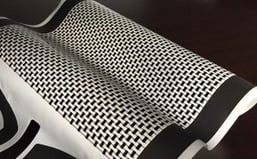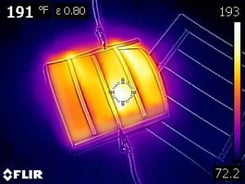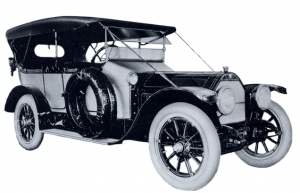In the amount of time it takes you to read this sentence, technology in some way will have advanced further than it was before. Every minute that passes is a minute where somewhere we have a better understanding of applied sciences. All of those passed minutes would sum up to a year and according to Moore’s Law we will have doubled our overall understanding with technology from the year prior; which is absolutely mind-blowing. Right now, we are all a part of the most innovative, connected and collaborative era there has ever been. This sheds light on why such rapid innovation is possible, but while most products seem to be advancing; one area has remained stagnant- automotive heated seats.
In the beginning
Before discussing the future of transportation luxuries, we will take a look at where things began. In 1909 at the 13th International Auto Show- Hudson, the 3rd largest domestic automaker at the time, debuted the revolutionary (enclosed) Hudson Twenty. This was the first mass-production vehicle that kept its occupants safe from the elements such as rain, sleet, and snow. This innovation left one issue without a remedy though, the cold. Ford was the first one to take a stab at a solution to this. The Ford Hot Air Heater they called it, came out twenty years after the Hudson and redirected air from the engine bay into the cabin. The initial product was found to be inconsistent and unsafe- which led to several different variations of the original design until General Motors came out with the model that is the basis of all in-dash HVAC units we see in cars today.
What About Heated Seats?
This innovation would take some time- almost forty years to be exact. There are rumors that say Cadillac filed for a patent on a technology similar to what would resemble heated seats, but these patents never amounted to anything put into mass production. It was in the early 1970’s when Swedish automaker, Saab, would begin to make the heated seat option available on their vehicles. Oddly enough, it was never marketed as a general climate comfort feature and instead was intended to minimize backaches during long commutes.
It’s been almost 50 years since Saab came out with the original design for heated seats, but not much has changed. Below is a diagram of the shared electrical system found in the 1970’s Saab’s and brand new 2020 vehicles.
The Resistor

First there is the resistor, which is a long element coil which electricity passes through. The coil itself is commonly known as a resistor due to the fact that the electricity running through it is resistant. This resistance causes friction which in turn produces heat.
The Relay

Similar to railway switches which allows trains to switch from one track to another, the relay allows the electricity to switch from a small amount of power to a larger amount of power. When the seat is initially turn on, the circuit draws from the small amount of power. As time goes by, the small amount of power generates energy though the coil so that a magnetic field can form. Once this field becomes great enough it pulls a lever which tells the relay to switch to the larger amount of power (which in this case is the car battery.)
The Thermostat

The thermostat is a thermal regulator in the way of allowing the heater in the seats to only reach a certain temperature before telling the relay to switch from the car battery (high power) to a low power option (possibly no power). The resistor then works in tandem with the relay and thermostat to try and keep the occupant at the determined level of heat. Newer cars also allow you to choose between low, medium, and high heat options which merely raises the thermostat threshold with each different selection.
Out with the old
As of right now, all cars are using some iteration of Saab’s element wire heating system. Some might ask why there would need to be a change in the technology that is out there now if it works the way that it should. They should also know that the current technology is extremely outdated, overpriced, and potentially harmful with much more modern options available. “Potentially harmful?” Yes, since its initial application in cars; horror stories have populated from those who fell victim to a faulty thermostat which takes the safe limit off of how hot the element wire can get. That means the wire will keep heating until it eventually reaches its melting point (1400°F). Countless people have suffered second and third degree burns from these units going faulty and, in some cases, have even caused vehicles to catch fire. Which poses the question “What is the better technology?”. The answer lies within printed electronics.
How Heated Seats are Now
As stated before- the conventional method heating a seat is by using an element wire, relay, and thermostat. The element wire (resistor) is massive by today’s standards, in some cases coming in at a whopping .1” – .2” thick (just shy of #2 pencil). Due to this thickness, manufactures are forced to make design decisions that aren’t ideal to hide the “bulk” feeling that wire can produce. In order to heat these thick wires also takes time to reach the designated heat, which leads to comments like “My seats get hot right about when I get to my destination”. This defeats the purpose of including the feature in a vehicle! So far, these old materials are bulky, have a history of harmful failures, and are slow to heat. In addition to having some big design draw backs- they’re also more expensive to manufacture due to the wires themselves being a large portion of the expense. There really aren’t many notable advantages to them, which is why we are going to switch lanes and discuss the printed electronics solution.
How Heated Seats Will Be
 Printed heaters, by virtue of the name “print” are much thinner than the conventional wires. How much thinner? The conductive inks can’t be measured in inches, or millimeters- they have to be measured in microns. Several passes of conductive ink are printed onto a thin, flexible, and stretchable TPU (thermo plastic polyurethane) that can vary from one construction to the next in stack-up heights starting at .030”. The thermostat that element wire systems use to control the heat are not required in some printed heater applications. The ink blends that are used can be customized to the maximum preferred heated and will fail (turn off) in the instance of any possible overheating- making these heaters PTC technology (Positive Temperature Coefficient). This feature alone removes any possibility of sustaining 2nd or 3rd degree burns.
Printed heaters, by virtue of the name “print” are much thinner than the conventional wires. How much thinner? The conductive inks can’t be measured in inches, or millimeters- they have to be measured in microns. Several passes of conductive ink are printed onto a thin, flexible, and stretchable TPU (thermo plastic polyurethane) that can vary from one construction to the next in stack-up heights starting at .030”. The thermostat that element wire systems use to control the heat are not required in some printed heater applications. The ink blends that are used can be customized to the maximum preferred heated and will fail (turn off) in the instance of any possible overheating- making these heaters PTC technology (Positive Temperature Coefficient). This feature alone removes any possibility of sustaining 2nd or 3rd degree burns.
More on Printed Heaters
 Heating times are also reduced to a near instant speed due to the lack of thickness in the construction. An added benefit to being printed on TPU is the fact that these heaters are extremely flexible, stretchable, and conformable to seat backs, occupants, and seat controls- all without losing heating capabilities. Pairing ink with TPU also adds the ability of making the entire unit moisture resistant. Printing a pass of encapsulate that is offset from the size of the entire printed area seals the conductive inks away from moisture. With all these superior qualities you might be led to believe that this way of producing heaters would be more costly, the truth is that they are not. A minimal amount of conductive material used in the construction, so almost any printed heater will be more economical than any conventional element wire heater.
Heating times are also reduced to a near instant speed due to the lack of thickness in the construction. An added benefit to being printed on TPU is the fact that these heaters are extremely flexible, stretchable, and conformable to seat backs, occupants, and seat controls- all without losing heating capabilities. Pairing ink with TPU also adds the ability of making the entire unit moisture resistant. Printing a pass of encapsulate that is offset from the size of the entire printed area seals the conductive inks away from moisture. With all these superior qualities you might be led to believe that this way of producing heaters would be more costly, the truth is that they are not. A minimal amount of conductive material used in the construction, so almost any printed heater will be more economical than any conventional element wire heater.
Butler Technologies Printing Heat
Printed heaters are going to be the future of the automotive heated seats, but why stop there. Printed heaters can also be utilized in other areas of the automotive industry such as the steering wheel or floor mats. The moisture resistance also makes external features such as side mirrors and door handles, or even motorcycle seats perfect candidates for exploration. If this article has sparked your interest into how feasible an idea might be for a certain application- a great place to start is a company with 30 years of print experience- 10 of that being in the forefront of the printed electronics industry. Butler Technologies, Inc. is a consumer driven company that puts the consumer first. A phone call will put you in touch with real people, who have real experience working on projects such as the 2016 Team USA Ralph Lauren Winter Olympics heated jackets, the Lubrizol heated commuter jacket, and many more projects being run though production cycles right now. Stop asking the right questions to the wrong people and contact us today.
